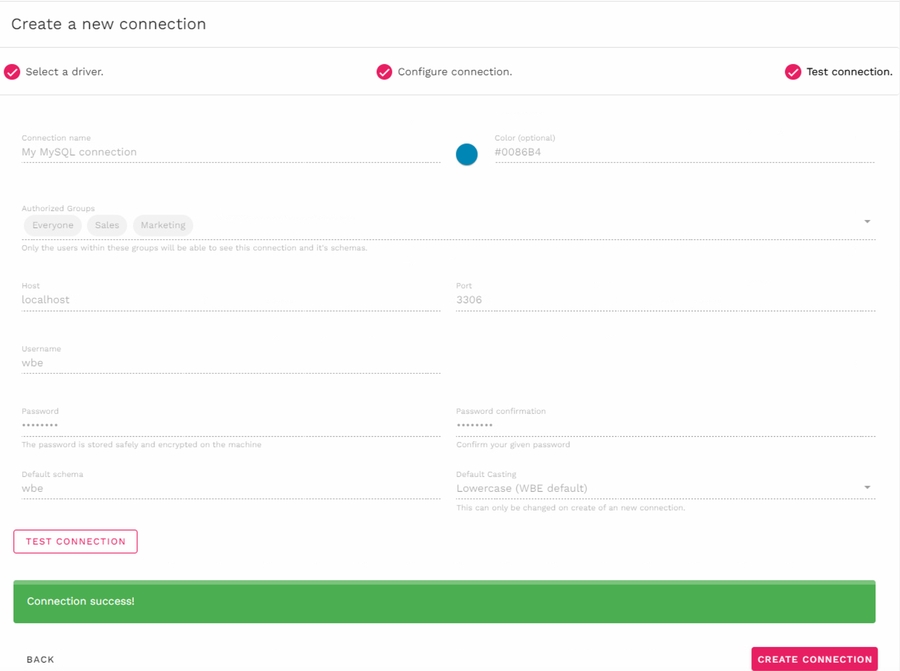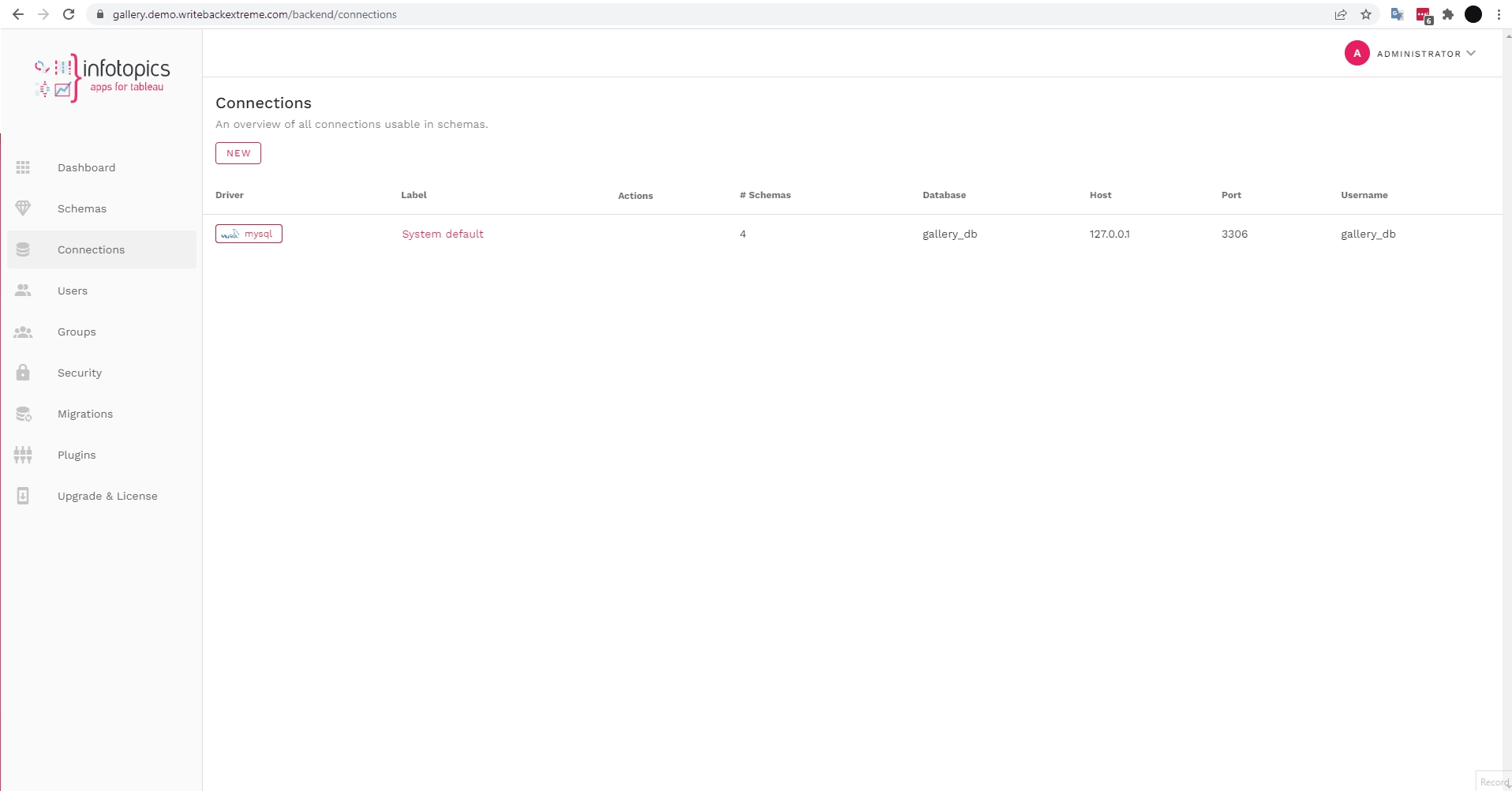Connections
Connections hold information about the connections to your databases. You only have to do this once for every database connection you would like to use for a WriteBack scenario. The username and password of a connection are stored safely and encrypted in our back-end.
A schema is connected to one of the available connections of the WriteBackExtreme module. You can have multiple schemas connected to one single connection. You can simply state that a connection is the authorized path to a database server and one database to store or edit write back information via the schemas within the available modules.
Access to connections is restricted to admins or to users with the connection manager role.
Create a new database connection
Below you will find the steps to create a new connection. In this example we create a connection to a MySQL database.



Below you see an animated GIF that illustrates the entire process of creating a new connection. You can also re-open a connection and change settings, although it is not recommended to change existing connections.

Authorized Groups
WriteBackExtreme uses a group-based access model to manage which users can connect to which data sources (connections).
Users are members of groups.
Connections (to databases) can be assigned to one or more groups.
A user gains access to a connection through their group membership.
The field `Authorized groups` on the create connection page is used to assign the groups to this connection. Groups can also be assigned from the connection index page using the 3 dots at the end of each row.
Quirks with SQL Server
1. Windows Authentication for SQL Server connections
It is possible to leave the username and password empty when setting up the connection in the setup of the application. The application will recognize this and instead of login in with a fixed username password, it will use the AD (Active Directory) account of the user running the PHP application.
2. Schema other than DBO
Most SQL Server database run on the dbo schema by default. When you want to connect to a different schema other than dbo you'll need to set the default schema for your user to the proper one.
ODBC Setup
For some connections like Snowflake, Databricks or Teradata you need to install ODBC drivers and configure an ODBC Connection first. Click here to view some examples of this configuration.
Last updated